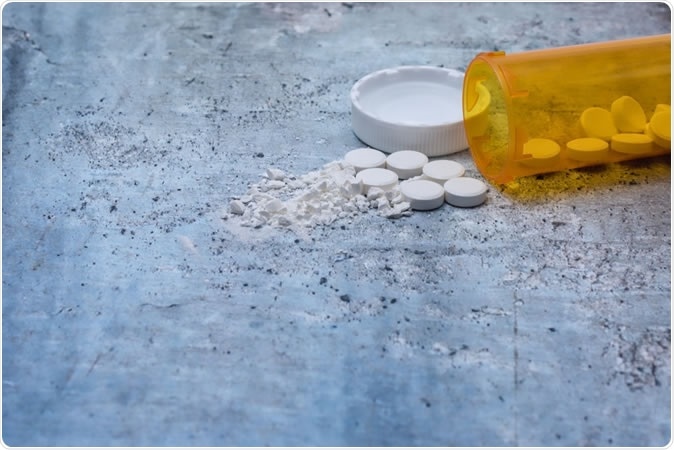Opioid addiction and dependency have become a common plague in many countries of the world. Accompanying these conditions, opioid overdose is being increasingly encountered in many emergency settings. The standard and highly effective antidote for this is naloxone hydrochloride, an opioid antagonist which has been in use for over 4 decades. As a result it has been listed as an essential medicine by the World Health Organization (WHO).
Both intramuscular and intravenous routes are common, but intranasal naloxone is also found to be effective. In fact, American programs that allow home use of naloxone offer the users devices which can be used for intranasal administration as well as those meant for intramuscular injection. The issue is the lack of sound evidence with respect to the efficacy of alternative routes of administration.
The question the researchers faced is whether intranasal naloxone treatment is equally effective compared to the other routes. Earlier data on the absorption and distribution of the drug seemed to suggest that intranasal naloxone was not well absorbed compared to intramuscular use. However, the use of more concentration formulations shows that though intranasal naloxone takes longer to begin its action, it reaches required levels in the blood within 5-20 minute, over a range of naloxone doses.
Two previous studies compared patients who were treated for overdose out of hospital by intranasal vs intramuscular naloxone. Intranasal naloxone was used in 2 different concentrations, at 2mg/1 mL and 2 mg/5mL. Both trials showed that overdose reversal was slower in the first (intranasal) group, and more of these patients required intramuscular rescue doses. However, the treating personnel were not blinded in either study which may have biased the results.

Image Credit: Tim Gray / Shutterstock
The study
The focus of a new study, published in the journal JAMA Network Open, was to compare the effectiveness of 800 µg/mL/mL naloxone used by the intranasal vs intramuscular route, to reverse acute opioid overdose. The participants were recruited from people attending the Uniting Medically Supervised Injecting Centre (MSIC) in Sydney, Australia, in the period February 2012 to January 3, 2017 – a legal supervised injection center for addicted adult injectable drug users.
There were 215 opioid overdoses in 197 individuals, of which about 48% received intramuscular naloxone and the rest intranasal naloxone, on a randomized basis. About 88% were men, with a mean age of 34 years. All patients who showed signs of overdose were first treated with 5 minutes of ventilation, and these 215 cases from 197 patients who failed to respond to ventilation represented relatively high overdoses.
Among those who received naloxone intramuscularly, 60% had injected heroin, compared to 62% of cases in the intranasal group. Other opioids were similarly distributed between the groups.
If the patient did not show adequate recovery within 10 minutes of treatment, a secondary or rescue dose of naloxone was given by intramuscular injection. This was the primary outcome in this trial. Secondary outcomes were measured as the time taken to resume spontaneous effective breathing at 10 or more per minute, and to regain consciousness to a level of GCS (Glasgow Coma Scale) score of 13 or more.
The findings
Those who received intramuscular naloxone required a secondary dose in about 9% compared to 23% in the intranasal group. In real-world terms, this means that 7 people with overdose must be given intramuscular naloxone to prevent 1 intramuscular rescue dose.
Secondary outcomes showed the same trend. It took 8 minutes on average to reach a respiratory rate of 10 or more per minute with intramuscular naloxone, and 17 minutes with the intranasal route. The individual regained consciousness in 8 minutes with intramuscular naloxone compared to 15 minutes with the intranasal drug.
Overall, only 23% of people treated with intranasal naloxone required an intramuscular rescue, but both primary and secondary outcomes were significantly better with the intramuscular route of administration. Intranasal and intramuscular administration thus carried an 80% and 65% higher risk of longer delay to the resumption of normal breathing patterns and normal consciousness.
However, the researchers report that many reversals are reported in the community using take-home intranasal naloxone, and as such, they don’t know if such a delay is of any clinical importance.
Implications
The researchers suggest that intranasal naloxone as practiced in take-home naloxone programs is not as efficient as when given intramuscularly. Larger doses must be given intranasally to achieve the same plasma levels that are obtained following 400 µg given intramuscularly. For instance, intranasal formulations that contain 2 mg/0.1mL could be used to achieve a rapid and adequate plasma steady state equivalent to that following intramuscular administration, at least in the first 5 minutes following administration.
The advantages of intranasal administration are obvious: it is non-invasive, avoids needlestick injury (all the more important since half of the patients in either group reported they carried a blood-borne virus), and requires less training unless an autoinjector is used, which is, however, much more costly.
Newer approved intranasal naloxone products contain 4 mg/0.1 mL, but whether they actually achieve greater atomization is a moot point, since they use the same design as earlier devices. A second issue with the use of these intranasal formulations is that in order to attain equivalent 5-minute plasma concentrations, they use higher doses. These, however, cause plasma levels to keep rising to reach a concentration more than twice that attained with the 400 µg intramuscular dose, at 1 hour post-dose. The clinical implications of this are unknown. Optimal intranasal dosage remains an open research area, therefore.
Naloxone given intranasally is thus less effective than when given intramuscularly, if both are at the same concentrations and used at the same dosage. However, both routes are effective at reversing opioid overdose, which suggests that at optimal dosage, the intranasal route could be used as a safer and more convenient way to treat this condition.
Journal reference:
Dietze P, Jauncey M, Salmon A, et al. Effect of Intranasal vs Intramuscular Naloxone on Opioid Overdose: A Randomized Clinical Trial. JAMA Netw Open. 2019;2(11):e1914977. doi:https://doi.org/10.1001/jamanetworkopen.2019.14977, https://jamanetwork.com/journals/jamanetworkopen/fullarticle/2755306